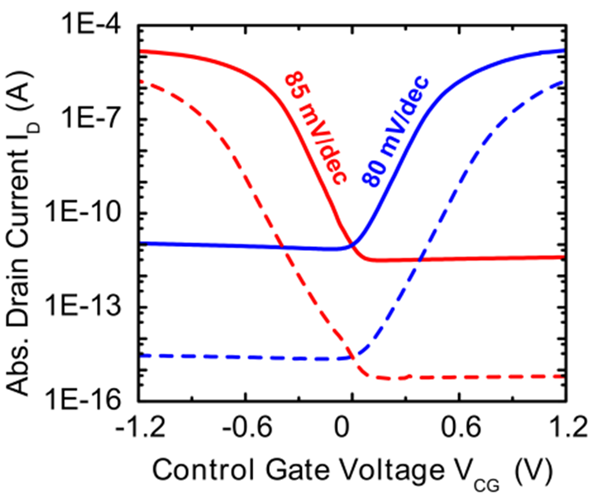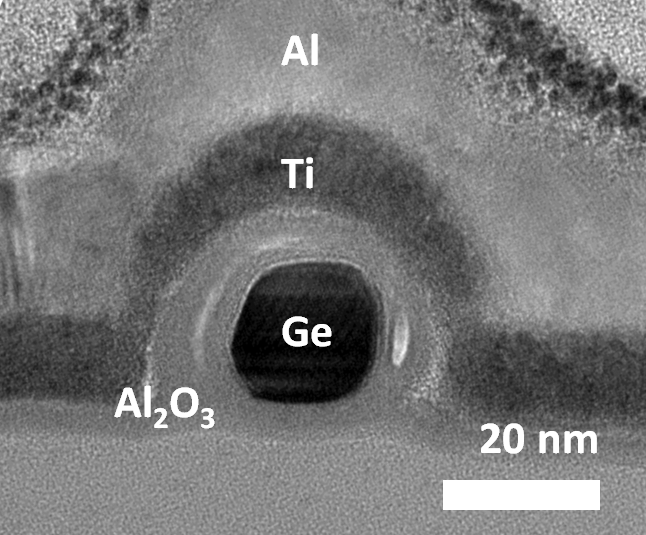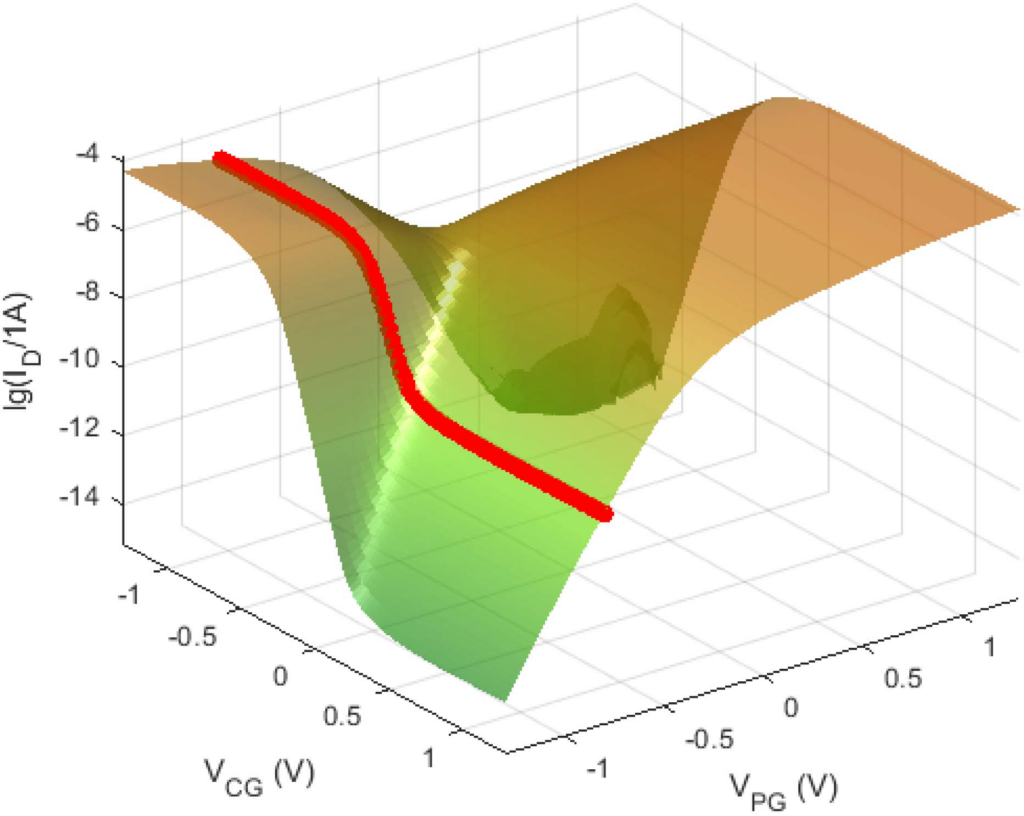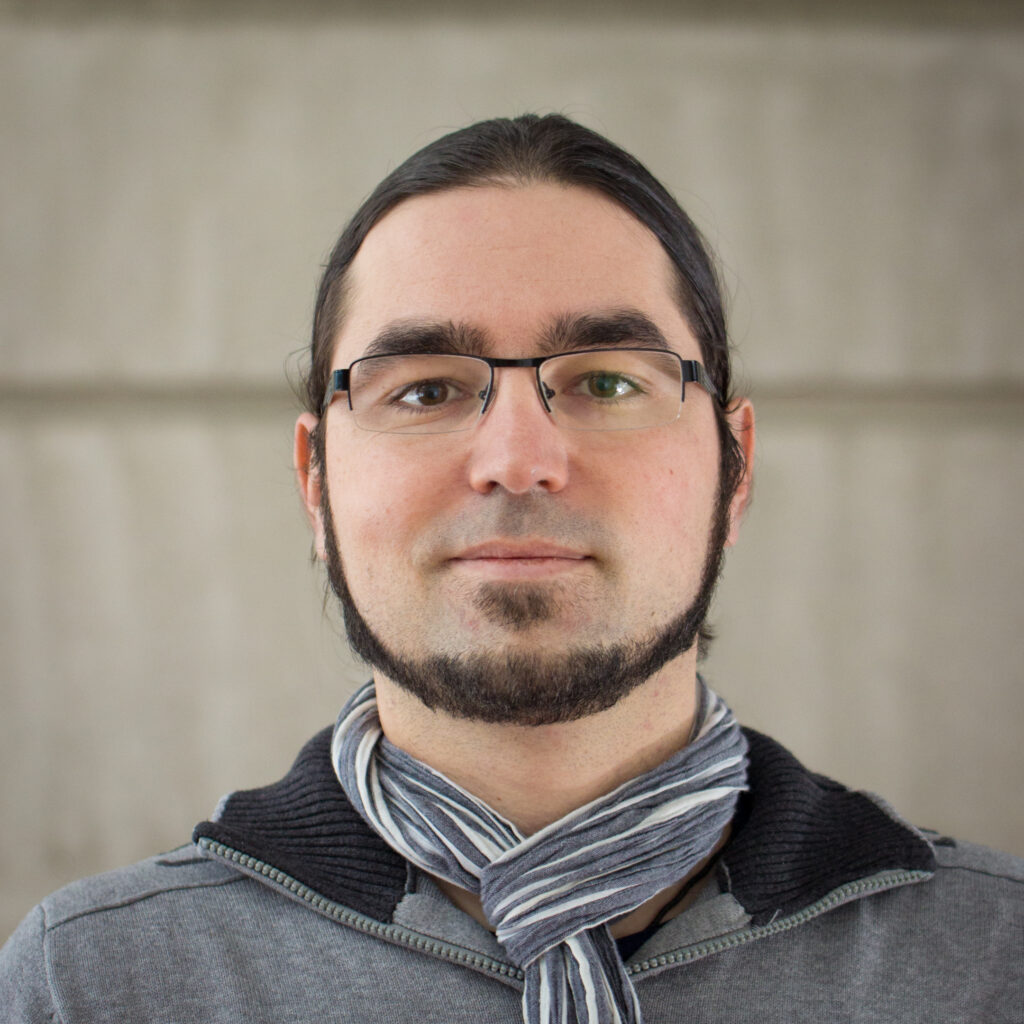Low-bandgap materials, such as germanium (Ge), indium-arsenide (InAs) or layered 2D materials such as phosphorene, are among the most discussed candidates to boost RFET individual device performance. The reduced bandgap as compared to silicon channel material can be used to reduce the overall Schottky barriers for both carrier types, thus achieving higher on-currents and reduced threshold voltages (Fig. 1). While conventional MOSFETs made from those materials exhibit a strongly degraded off-state, source-drain leakage current in RFETs can be drastically reduced by the use of the additional blocking potential induced by the program gates.

We have experimentally demonstrated these properties in the world-wide first transistor based on germanium that can be programmed between electron- (n) and hole- (p) conduction (Fig. 2). To showcase the potential of the Germanium RFET technology we have developed a Verilog-A table model for the analysis of dynamically reconfigurable logic gates (Fig. 3). The model is based on TCAD simulations of a nanowire transistor design with feature sizes compatible to a 14nm FinFET process. It showcased 64% benefit in inverter delay over a silicon technology with similar feature sizes. Various circuits have been analyzed. The model is available for download on our partner website: (https://cfaed.tu-dresden.de/pd-downloads).

Promising many of the advantages of germanium without most of its drawbacks, such as water solubility, crystalline Silicon-Germanium (cSiGe) has emerged as the most prominent candidate for CMOS con-integration of high performance RFETs. Still, questions related to the stability and band-alignment of the Schottky contacts have to be solved. Thereto, NaMLab is currently investigating the diffusive formation of germano-silicides in SiGe nano-channels for RFET applications. To this end, a wide range of alloy materials and formation temperatures is tested. So far, a metal alloy of 90% Nickel with 10% Titanium has been identified as the most promising option for contact formation.

Cooperation:
CfAED – Center of Advancing Electronics Dresden (Germany)

